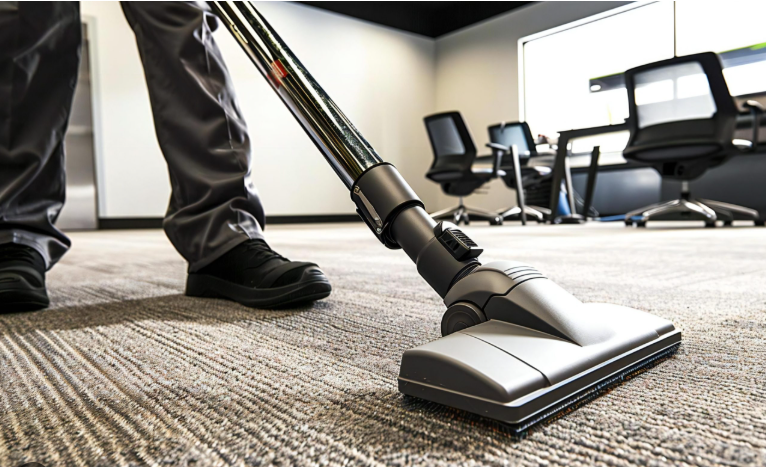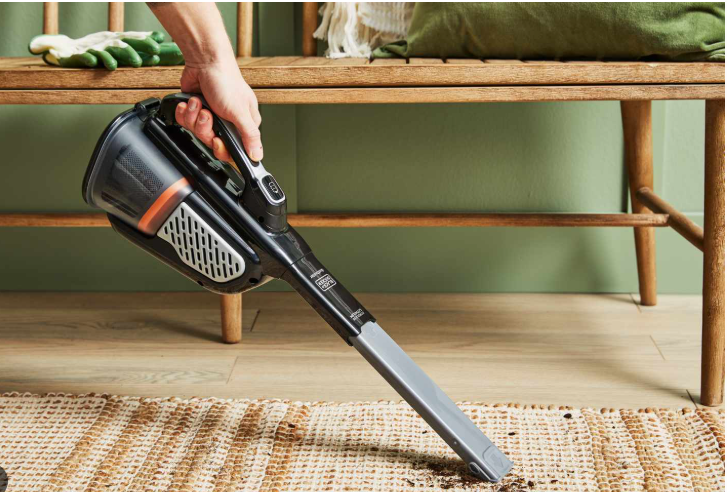The future of vacuum cleaner technology promises to revolutionize home cleaning with advancements in AI, robotics, sustainability, and smart connectivity. As we look toward 2025 and beyond, vacuum cleaners will evolve from basic cleaning tools into intelligent, eco-friendly systems that anticipate your needs and minimize environmental impact. In this forward-looking guide, we’ll explore emerging trends, innovative features, and how these developments will integrate with vacuum cleaner setup and maintenance. Whether you’re interested in robot vacuums, cordless sticks, or sustainable designs, we’ll highlight how the future of vacuum cleaner technology will make cleaning effortless, efficient, and greener.
Why the Future of Vacuum Cleaner Technology Matters
With rising demands for convenience, health-conscious cleaning, and environmental sustainability, the future of vacuum cleaner technology focuses on automation, energy efficiency, and health benefits. By 2025, expect vacuums that use AI for predictive cleaning, self-sanitizing features, and integration with smart homes. This evolution will reduce manual effort, improve air quality, and align with global sustainability goals. Our guide draws from industry experts (e.g., CES 2024 trends, Gartner reports) to preview what’s next, including tips for vacuum cleaner maintenance in the smart era.
Emerging Trends in Vacuum Cleaner Technology
1. Advanced AI and Machine Learning
AI will transform vacuums into proactive cleaning partners. By 2025, expect models that learn your habits, predict dirt accumulation, and adapt cleaning patterns in real-time.
- Predictive Cleaning: Vacuums like next-gen Roombas or Roborocks will analyze foot traffic via sensors to prioritize high-dirt areas.
- Obstacle Mastery: Enhanced computer vision will navigate complex environments, avoiding pet waste or cables with 99% accuracy.
- Voice and Gesture Control: Integration with Alexa, Google, and Apple HomeKit for hands-free commands like “Clean the kitchen now.”
Future Impact: Reduces cleaning time by 30–50%; ideal for busy households. For how to use a vacuum cleaner in the AI era, simple voice setup will replace manuals.
2. Self-Cleaning and Self-Maintenance Systems
The future of vacuum cleaner technology emphasizes hands-off operation. Self-washing docks and auto-emptying will become standard, with innovations like UV sanitization to kill bacteria.
- Auto-Wash Docks: Models like the upcoming Roborock S9 series will clean mop pads and dry them to prevent mold.
- Self-Emptying with Compaction: Compress debris to hold 90 days’ worth, reducing trips to the trash.
- Diagnostic AI: Apps will detect issues like clogged filters and suggest fixes or auto-order parts.
Future Impact: Minimizes vacuum cleaner maintenance to once-a-month checks. Expect 80% less user intervention by 2027.

3. Sustainability and Eco-Friendly Designs
With growing eco-consciousness, the future of vacuum cleaner technology will prioritize recyclable materials, energy efficiency, and reduced waste.
- Biodegradable Bags and Filters: Compostable options from brands like Miele to cut plastic waste.
- Energy-Efficient Motors: Brushless motors consuming 50% less power, with solar-charging docks for robots.
- Modular Designs: Easy-to-repair components to extend lifespan, reducing e-waste (inspired by EU right-to-repair laws).
Future Impact: Aligns with global sustainability goals; expect carbon-neutral models by 2030. For vacuum cleaner safety, eco-materials will be non-toxic and hypoallergenic.
4. Health-Focused Features
Post-pandemic, vacuums will prioritize air quality and germ reduction.
- UV-C Sanitization: Built-in lights to kill 99.9% of bacteria on brushes and bins.
- Advanced HEPA Filtration: Capture 99.999% of particles down to 0.1 microns, with app-tracked air quality reports.
- Antimicrobial Coatings: Surfaces that resist mold and bacteria growth.
Future Impact: Ideal for allergy sufferers; integrates with home air purifiers for whole-house health monitoring.
5. Hybrid and Multi-Function Devices
The future of vacuum cleaner technology blurs lines between cleaning, mopping, and air purification.
- Vacuum-Mop-Air Purifier Combos: All-in-one units like Dyson’s upcoming hybrids that vacuum, mop, and filter air simultaneously.
- Window and Ceiling Cleaners: Robotic attachments for hard-to-reach areas.
- Portable Multi-Surface: Compact devices for cars, RVs, and outdoor gear.
Future Impact: Streamlines household chores; expect 40% market growth in hybrid models by 2026.
6. Enhanced Connectivity and IoT Integration
Smart homes will make vacuums central hubs for cleaning data.
- Mesh Network Integration: Vacuums as Wi-Fi extenders or security cameras.
- Data Analytics: Apps tracking cleaning history, suggesting schedules, and integrating with fitness apps (e.g., “You’ve been active—time to clean?”).
- AR Setup: Augmented reality apps for easy vacuum cleaner setup and troubleshooting.
Future Impact: Seamless smart home ecosystems; privacy-focused data encryption will be standard.

Top Future Vacuum Cleaner Technologies to Watch in 2025
Based on industry previews (e.g., CES 2025 rumors), here are anticipated models:
- Dyson Zone 2.0: Cordless vacuum with integrated air purification headphones; expected Q2 2025.
- iRobot Roomba Combo j10: AI-driven vacuum-mop with self-drying dock; rumored for fall 2025.
- Roborock Q Revo MaxV: Omnidirectional wheels for 360° maneuverability; sustainability-focused materials.
- Miele Triflex HX2: Modular cordless with swappable batteries for uninterrupted cleaning.
How the Future Will Impact Vacuum Cleaner Maintenance
In the future of vacuum cleaner technology, maintenance will be automated and user-friendly:
- App-Based Reminders: Notifications for filter changes or brush cleaning.
- Self-Diagnostic Tools: AR-guided repairs via smartphone cameras.
- Subscription Services: Auto-delivery of filters, bags, and parts.
Tip: Even future models need basic care—clean sensors monthly and update firmware for optimal performance. See VacuumCleanerT for evolving maintenance guides.
Challenges and Considerations for the Future
While exciting, the future of vacuum cleaner technology faces hurdles:
- Cost: Premium AI features may raise prices 20–30%; budget options will lag.
- Privacy: Data collection from smart vacuums requires robust security.
- Compatibility: Ensure new models work with existing smart home setups.
- E-Waste: Modular designs will help, but responsible recycling is key.
Tip: For vacuum cleaner safety, choose models with UL certification and data privacy features.
Conclusion: Embracing the Future of Vacuum Cleaner Technology
The future of vacuum cleaner technology in 2025 and beyond will make cleaning smarter, greener, and more intuitive, with AI-driven automation, sustainable designs, and health-focused innovations leading the way. From self-maintaining robots to hybrid multi-function devices, these advancements will transform how we maintain our homes. By staying informed and preparing for smart integration, you’ll be ready to adopt the next generation of vacuums. For the latest on emerging tech, vacuum cleaner tips, and how to use a vacuum cleaner in the digital age, visit VacuumCleanerT today.